Writing Effectively in Print and on the Web
Practical Guides for Librarians
 About the Series
About the Series
This innovative series written and edited for librarians by librarians provides authoritative, practical information and guidance on a wide spectrum of library processes and operations.
Books in the series are focused, describing practical and innovative solutions to a problem facing todays librarian and delivering step-by-step guidance for planning, creating, implementing, managing, and evaluating a wide range of services and programs.
The books are aimed at beginning and intermediate librarians needing basic instruction/guidance in a specific subject and at experienced librarians who need to gain knowledge in a new area or guidance in implementing a new program/service.
 About the Series Editor
About the Series Editor
The Practical Guides for Librarians series was conceived by and is edited by M. Sandra Wood, MLS, MBA, AHIP, FMLA, Librarian Emerita, Penn State University Libraries.
M. Sandra Wood was a librarian at the George T. Harrell Library, The Milton S. Hershey Medical Center, College of Medicine, Pennsylvania State University, Hershey, PA, for over 35 years, specializing in reference, educational, and database services. Ms. Wood worked for several years as a Development Editor for Neal-Schuman Publishers.
Ms. Wood received an MLS from Indiana University and an MBA from the University of Maryland. She is a Fellow of the Medical Library Association and served as a member of MLAs Board of Directors from 1991 to 1995. Ms. Wood is founding and current editor of Medical Reference Services Quarterly , now in its 35th volume. She also was founding editor of the Journal of Consumer Health on the Internet and the Journal of Electronic Resources in Medical Libraries and served as editor/co-editor of both journals through 2011.
Titles in the Series
1. How to Teach: A Practical Guide for Librarians by Beverley E. Crane
2. Implementing an Inclusive Staffing Model for Todays Reference Services by Julia K. Nims, Paula Storm, and Robert Stevens
3. Managing Digital Audiovisual Resources: A Practical Guide for Librarians by Matthew C. Mariner
4. Outsourcing Technology: A Practical Guide for Librarians by Robin Hastings
5. Making the Library Accessible for All: A Practical Guide for Librarians by Jane Vincent
6. Discovering and Using Historical Geographic Resources on the Web: A Practical Guide for Librarians by Eva H. Dodsworth and L. W. Lalibert
7. Digitization and Digital Archiving: A Practical Guide for Librarians by Elizabeth R. Leggett
8. Makerspaces: A Practical Guide for Librarians by John J. Burke
9. Implementing Web-Scale Discovery Services: A Practical Guide for Librarians by JoLinda Thompson
10. Using iPhones and iPads: A Practical Guide for Librarians by Matthew Connolly and Tony Cosgrave
11. Usability Testing: A Practical Guide for Librarians by Rebecca Blakiston
12. Mobile Devices: A Practical Guide for Librarians by Ben Rawlins
13. Going Beyond Loaning Books to Loaning Technologies: A Practical Guide for Librarians by Janelle Sander, Lori S. Mestre, and Eric Kurt
14. Childrens Services Today: A Practical Guide for Librarians by Jeanette Larson
15. Genealogy: A Practical Guide for Librarians by Katherine Pennavaria
16. Collection Evaluation in Academic Libraries: A Practical Guide for Librarians by Karen C. Kohn
17. Creating Online Tutorials: A Practical Guide for Librarians by Hannah Gascho Rempel and Maribeth Slebodnik
18. Using Google Earth in Libraries: A Practical Guide for Librarians by Eva Dodsworth and Andrew Nicholson
19. Integrating the Web into Everyday Library Services: A Practical Guide for Librarians by Elizabeth R. Leggett
20. Infographics: A Practical Guide for Librarians by Beverley E. Crane
21. Meeting Community Needs: A Practical Guide for Librarians by Pamela H. MacKellar
22. 3D Printing: A Practical Guide for Librarians by Sara Russell Gonzalez and Denise Beaubien Bennett
23. Patron-Driven Acquisitions in Academic and Special Libraries: A Practical Guide for Librarians by Steven Carrico, Michelle Leonard, and Erin Gallagher
24. Collaborative Grant-Seeking: A Practical Guide for Librarians by Bess G. de Farber
25. Story-Time Success: A Practical Guide for Librarians by Katie Fitzgerald
26. Teaching Google Scholar: A Practical Guide for Librarians by Paige Alfonzo
27. Teen Services Today: A Practical Guide for Librarians by Sara K. Joiner & Geri Swanzy
28. Data Management: A Practical Guide for Librarians by Margaret E. Henderson
29. Online Teaching and Learning: A Practical Guide for Librarians by Beverley E. Crane
30. Writing Effectively in Print and on the Web: A Practical Guide for Librarians by Rebecca Blakiston
Writing Effectively in Print and on the Web
A Practical Guide for Librarians
Rebecca Blakiston
Practical Guides for Librarians, No. 30
ROWMAN & LITTLEFIELD
Lanham Boulder New York London
Published by Rowman & Littlefield
A wholly owned subsidiary of The Rowman & Littlefield Publishing Group, Inc.
4501 Forbes Boulevard, Suite 200, Lanham, Maryland 20706
www.rowman.com
Unit A, Whitacre Mews, 26-34 Stannary Street, London SE11 4AB
Copyright 2017 by Rowman & Littlefield
All rights reserved. No part of this book may be reproduced in any form or by any electronic or mechanical means, including information storage and retrieval systems, without written permission from the publisher, except by a reviewer who may quote passages in a review.
British Library Cataloguing in Publication Information Available
Library of Congress Cataloging-in-Publication Data Available
978-1-4422-7885-1 (pbk : alk. paper)
978-1-4422-7886-8 (electronic)
 The paper used in this publication meets the minimum requirements of American National Standard for Information SciencesPermanence of Paper for Printed Library Materials, ANSI/NISO Z39.48-1992.
The paper used in this publication meets the minimum requirements of American National Standard for Information SciencesPermanence of Paper for Printed Library Materials, ANSI/NISO Z39.48-1992.
Printed in the United States of America
To Gibberz Doodle Bean, aka The Gibbs,
who brought so much joy to our lives.
Shes barking at angels now.
Contents
Preface
Writing plays a role in almost everything we do. Its how we document our knowledge, share our stories, and ask our communities for help. Its a tool to teach, influence, and persuade those around us. And in todays digital age, were all publishers, sharing content with the world at the push of a button (literally). From webpages, to signage, to emailswriting is fundamental to our everyday lives.
Sadly, theres a lot of mediocre content out there: policy-driven websites with mountains of text, building signs that dont actually tell you what you need to know, convoluted emails that leave you wondering , What was the point of that? Todays reader is bombarded with endless streams of information and simply doesnt have time to sift through and make sense of it all.
Lets do our part to end the madness. Writing Effectively in Print and on the Web: A Practical Guide for Librarians encourages you to put your readers at the heart of all your content, ensuring that it is engaging, relevant, and useful. Youll learn techniques to write with clarity, precision, and purpose, which will serve you well in both your professional and your personal life.
I truly enjoyed writing this book. Ive always enjoyed nonfiction writingstudying English in college and taking pride in my analytical essays and argumentative papers. When my career path led me to focus on user experience, I quickly learned the power of the written word in the context of service and product design. At the University of Arizona Libraries, Ive led our website content efforts for the past five yearscreating an editorial style guide, voice and tone standards, and comprehensive training for all web content writers in the library. When I organized the User Experience Certificate for Library Juice Academy, I included courses on both writing for the web and content strategy. As my role evolved at the University of Arizona, I recognized the massive content challenges ahead and hired a full-time content strategist. Now with us for three years, our content strategist focuses on creating and sustaining quality written content on the website and beyond.
Next page
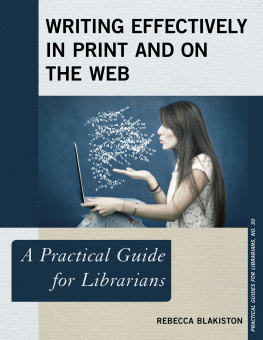
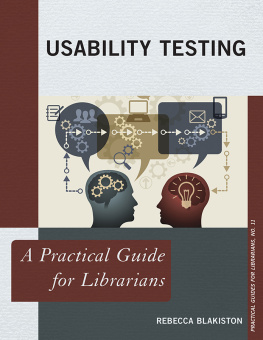

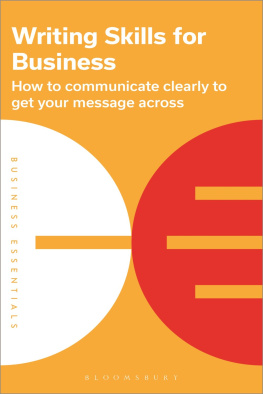
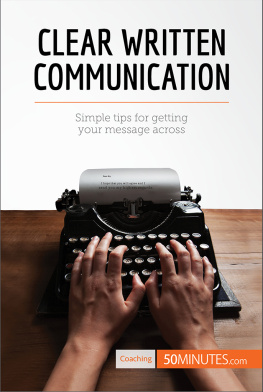
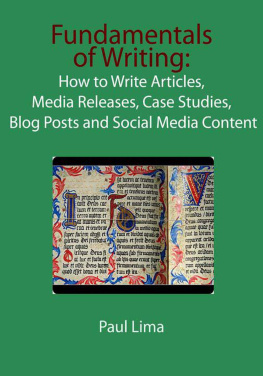
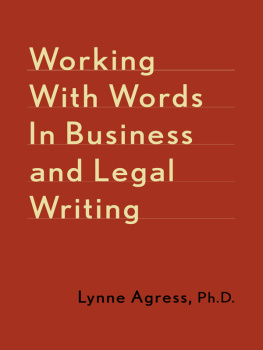
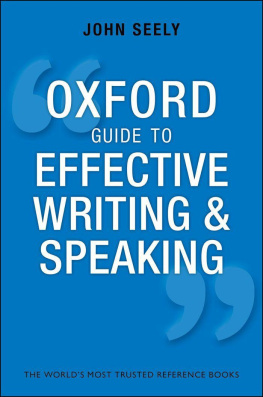

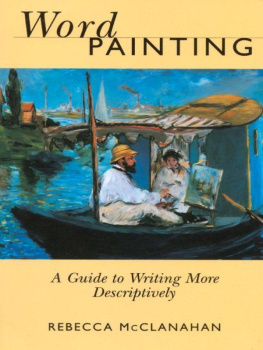
 About the Series
About the Series The paper used in this publication meets the minimum requirements of American National Standard for Information SciencesPermanence of Paper for Printed Library Materials, ANSI/NISO Z39.48-1992.
The paper used in this publication meets the minimum requirements of American National Standard for Information SciencesPermanence of Paper for Printed Library Materials, ANSI/NISO Z39.48-1992.